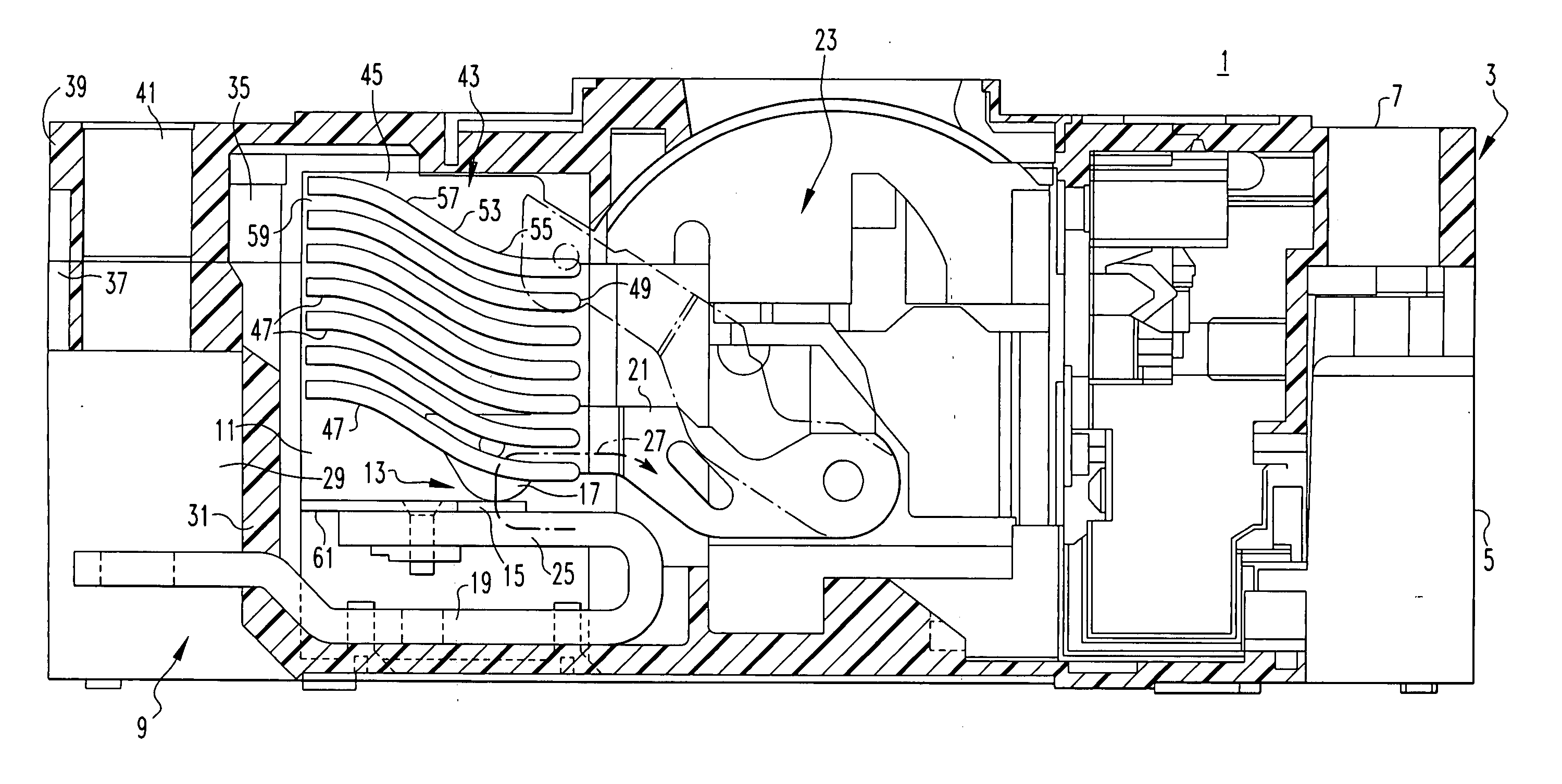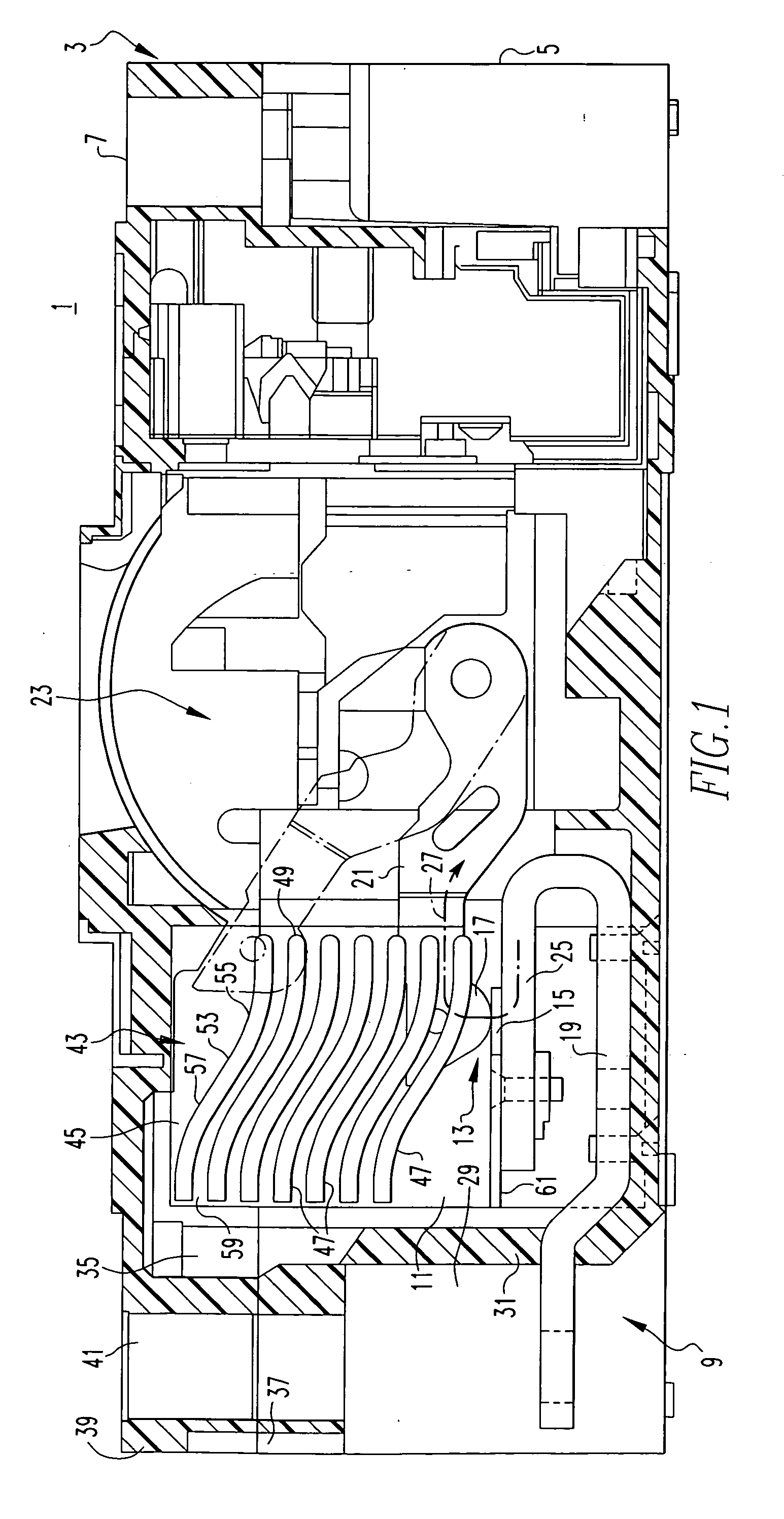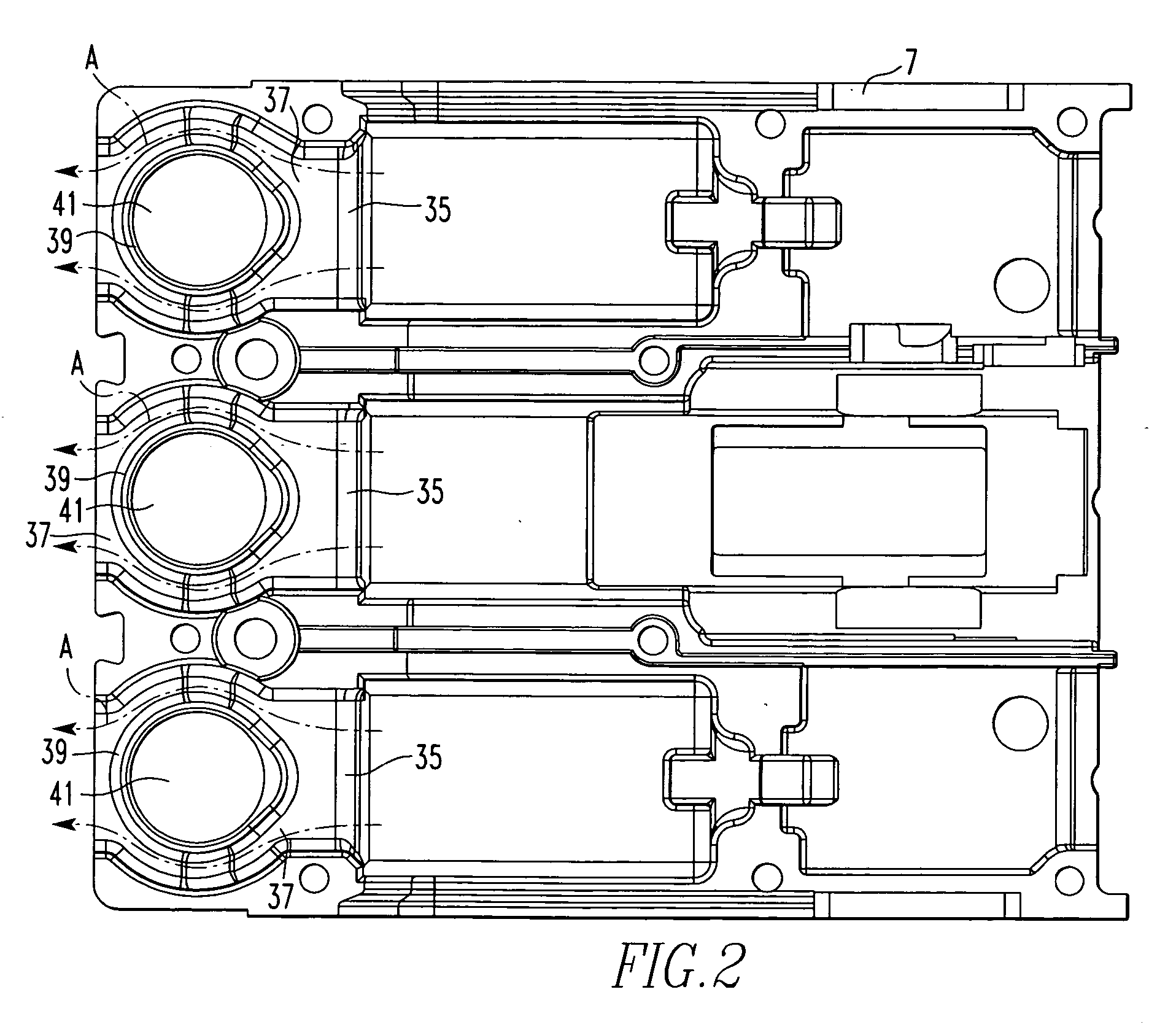ARC chute assembly and electric power switch incorporating same
- Summary
- Abstract
- Description
- Claims
- Application Information
AI Technical Summary
Benefits of technology
Problems solved by technology
Method used
Image
Examples
Embodiment Construction
[0017] The invention will be described as applied to a molded case circuit breaker, however, it will be apparent that the invention has application to other types of electric power switches in which the contacts are separated in an ambient atmosphere. The molded case circuit breaker 1 has a casing 3 formed by a base 5 and a cover 7. The particular circuit breaker 1 is a three-pole breaker. Accordingly, the casing 3 has for each pole 9 an arc chamber 11 containing separable contacts 13 including a fixed contact 15 and a movable contact 17. The fixed contact 15 is mounted on a line side main conductor 19 while the movable contact 17 is mounted on the free end of a pivotally mounted contact arm 21. The contact arms 21 of all of the poles 9 are simultaneously rotated from a closed position in which the separable contacts 13 are closed as shown in FIG. 1 to an open position (shown in phantom) by an operating mechanism 23 in a well-known manner. The line side main conductor 19 is bent bac...
PUM
 Login to View More
Login to View More Abstract
Description
Claims
Application Information
 Login to View More
Login to View More - R&D
- Intellectual Property
- Life Sciences
- Materials
- Tech Scout
- Unparalleled Data Quality
- Higher Quality Content
- 60% Fewer Hallucinations
Browse by: Latest US Patents, China's latest patents, Technical Efficacy Thesaurus, Application Domain, Technology Topic, Popular Technical Reports.
© 2025 PatSnap. All rights reserved.Legal|Privacy policy|Modern Slavery Act Transparency Statement|Sitemap|About US| Contact US: help@patsnap.com



